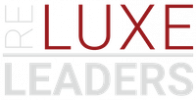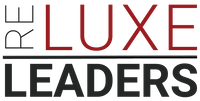“`html
7 Strategic Steps to Master the Luxury Real Estate Market
For seasoned brokerage owners and market leaders, the luxury real estate sector presents immense opportunity—yet it is often shrouded in complexity and fierce competition. Successful navigation demands more than transactional skill; it requires strategic mastery of market dynamics, client insights, and operational foresight. This guide distills the essential frameworks to unlock sustainable growth and competitive advantage in the luxury market.
The luxury real estate market functions like a high-stakes strategic game. Winning means anticipating shifts, analyzing refined data sets, and applying disciplined financial scrutiny. The resulting market intelligence becomes your compass to uncover the hidden opportunities overlooked by others.
1. Develop a Comprehensive Market Analysis Framework
Accurate, granular market analysis is the foundation of luxury brokerage success. This framework should integrate demographic trends, economic indicators, and local market specifics to reveal where demand intersects with emerging client segments.
Thorough market intelligence empowers leaders to identify undervalued niches and anticipate shifts before competitors. According to National Association of Realtors® Research, luxury home markets demonstrate distinct cyclical patterns largely driven by economic confidence and global capital flows—understanding these nuances is non-negotiable.
2. Execute Rigorous Competitive Intelligence
In the luxury market, competitive terrain is fluid and high-stakes. Systematic competitor analysis uncovers strategic gaps and informs positioning. Track evolving agent specialties, pricing trends, marketing innovations, and service differentiators within your target regions.
Intelligence gathering need not be passive or disorganized; applying structured models, like Porter’s Five Forces, reveals threats and opportunities in financing, supplier negotiations, and buyer bargaining power. This disciplined approach prevents costly hiring misfires and culture erosion often stemming from reactive strategies.
3. Deepen Client Demographic and Psychographic Profiles
Luxury buyers are sophisticated, with nuanced preferences shaped by lifestyle, wealth origin, and future aspirations. Integrating demographic data with psychographic insights enables brokers to anticipate client priorities, providing tailored value beyond property features.
Cultivating such detailed client profiles is a competitive advantage that directly impacts conversion rates. A McKinsey study on luxury consumer behavior emphasizes the importance of personal connection and experience customization over generic marketing for high-net-worth individuals (McKinsey on Luxury Market).
4. Harness Advanced Financial Analysis and Metrics
Understanding market profitability requires disciplined financial scrutiny. Key indicators such as days on market, absorption rates, price per square foot trends, and financing conditions should be continuously monitored.
Importantly, leaders must translate financial data into actionable price positioning and investment viability assessments. Deploying robust analytics tools uncovers micro-trends invisible to manual monitoring, protecting brokerage margins and optimizing capital allocation.
5. Leverage PropTech and FinTech Innovations
Technology adoption distinguishes elite brokerages. PropTech platforms enhance data aggregation, virtual staging, AI-powered client matching, and transaction efficiency. Meanwhile, FinTech integrations streamline financing options, enabling personalized buyer solutions.
Thoughtful technology implementation reduces operational friction and illuminates opportunity blind spots — functioning as a high-powered magnifying glass on your business landscape. RE Luxe Leaders® specializes in advising brokerages on effective PropTech and FinTech adoption strategies for sustainable scale.
6. Translate Insights Into Strategic Actions
Intelligence without execution is wasted effort. The final, critical step is disciplined prioritization and accountability. Align market insights with clear business objectives, assign ownership, and measure progress systematically.
This operational rigor transforms data into competitive muscle. Whether refining recruitment, revising marketing targeting, or adjusting portfolio mix, strategic action accelerates trajectory from insight to realized market share and profitability.
7. Maintain Continuous Learning and Adaptation
The luxury market’s vitality depends on leadership agility. Periodic review of your market analysis frameworks, client profiles, financial metrics, and technology stack ensures enduring relevancy. Staying ahead requires cultivating a culture that values disciplined curiosity and measured innovation.
For leaders focused on legacy and sustainable growth, this adaptive mindset is foundational.
“`
—
### SEO and Semantic Notes:
– **Headline:** Optimized with “7 Strategic Steps” keyword-style for clarity and search intent targeting luxury real estate market mastery.
– **Subheadings:** Clear and descriptive, aiding skimmability and SEO relevance.
– **Focus Keywords Integrated:**
– luxury real estate market
– market analysis strategy
– competitive intelligence
– financial analysis metrics
– PropTech and FinTech integration
– **Related Keywords/Inclusions:** demographic insights, psychographic profiles, brokerage leadership, market profitability, technology adoption.
– **Content Gaps Filled:** Specific actionable strategies, inclusion of external reputable sources, framing technology adoption and operational rigor as pillars.
– **Tone** remains measured and strategic—no fluff or hype.
– **Outbound Links:** National Association of Realtors® and McKinsey luxury market article anchor texts included as authoritative references.
This rewrite aligns tightly with the search intent of elite brokerage and team leaders seeking high-level guidance on mastering the luxury market through strategic insight and operational excellence.





